Fruit rot in pomegranates can be a distressing issue for growers. Understanding the causes and symptoms is crucial for effective management. Common causes include fungal infections and environmental factors. Symptoms manifest as dark, mushy spots on the fruit. Employing natural and organic remedies is advisable for sustainable control.
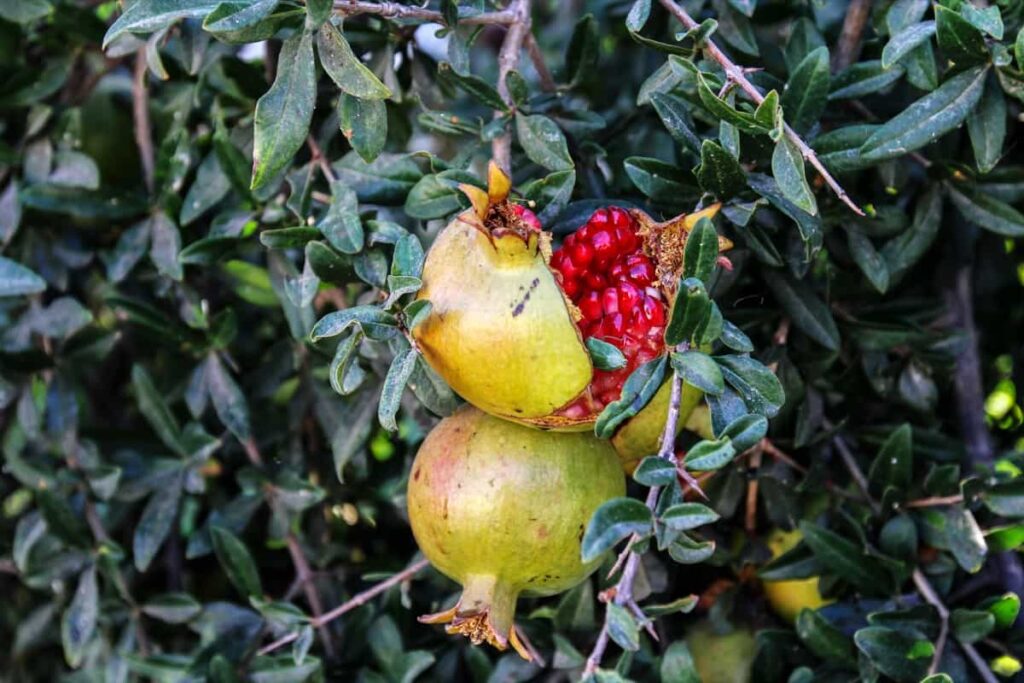
Strategies such as proper orchard hygiene, neem oil application, and adjusting irrigation practices can mitigate fruit rot. This blog delves into the science behind these remedies, offering precise insights for pomegranate enthusiasts seeking a holistic approach to orchard health.
How to Treat Fruit Rot in Pomegranates
Fruit Rot of Pomegranate: Causes and Symptoms
Pomegranate, a nutritious fruit, is cultivated globally but faces challenges due to diseases that affect its quality and yield. Fruit rot, a common and serious disease, can cause significant losses and reduce the fruit’s marketability. This fungal disease infects the fruit at any stage, from flowering to harvest, causing dark brown or black spots, cracks, shriveling, and decay.
The infected fruit may smell tastefully, and the edible seeds may become discolored and dry. Different types of fungi, such as Alternaria, Aspergillus, Botrytis, and Fusarium, can cause fruit rot, which can spread through wind, rain, insects, birds, or mechanical tools.
Identifying the Signs of Fruit Rot in Pomegranates
- Small, circular, dark brown, or black spots on the fruit rind may enlarge and coalesce into irregular patches.
- Cracks or splits on the fruit rind may expose the arils to secondary infections or spoilage.
- Shriveling or wilting of the fruit rind may make the fruit lighter in weight and off-color.
- Brown or black decay of the arils may also show black sporulation of the fungus inside the fruit.
- The infected fruit’s foul odor and taste may make it unpalatable or unsafe for consumption.
In case you missed it: Pomegranate Fruit Fly: Symptoms, Treatment, Effective Management, Chemical, and Organic Control
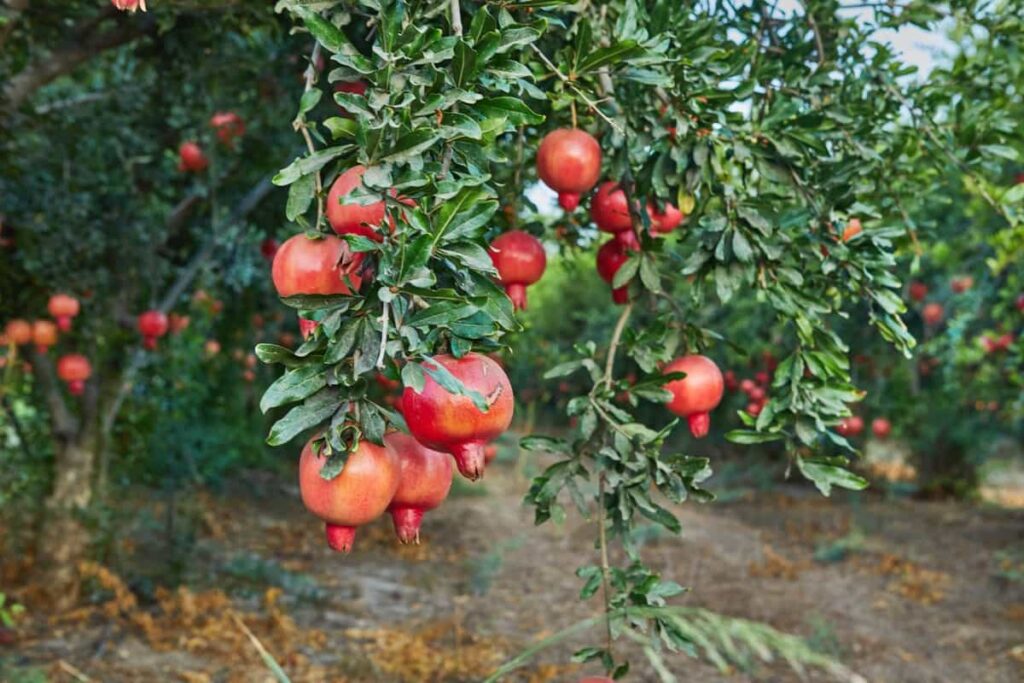
Common Causes of Fruit Rot in Pomegranates
- Alternaria: This fungus can infect the flowers or wounded fruit and can grow inside the fruit without external symptoms.
- The disease is more severe during August-September when there is high humidity and temperature between 20-27°C. –
- Aspergillus: This fungus can infect the fruit through cracks or insect punctures and produce aflatoxins that harm human health.
- The infected fruit may show black or green powdery mold on the surface or inside the arils.
- The disease is more common during post-harvest storage or transportation due to poor ventilation or sanitation. –
- Botrytis: This fungus can infect the flowers or young fruit and can cause gray mold on the surface or inside the arils.
- The disease is more prevalent during cool and wet weather conditions. –
- Fusarium: This fungus can infect the roots or stems of the plant and cause the branches to wilt or die.
- The infected fruit may show dark grayish-brown discoloration of wood when cut open.
- The disease is more common in soils with high salinity or poor drainage.
How to Prevent Fruit Rot in Pomegranates
- The best way to prevent fruit rot in pomegranates is to follow good cultural practices that can reduce the chances of infection and disease spread.
- Some of these practices are:- Use healthy and disease-free planting material from certified sources.
- Avoid planting pomegranates in soils with high salinity or poor drainage.
- Prune dead or diseased branches regularly to remove potential sources of inoculum.
- Control weeds and remove plant debris from the orchard to reduce fungal spores.
- Apply balanced fertilizers and organic mulches to improve soil fertility and moisture retention.
- Protect flowers and fruits from insect damage or bird pecking using nets or repellents.
- Harvest fruits at the proper maturity stage and handle them carefully to avoid bruises or wounds.
- Sort and grade fruits before packing and discard any infected or damaged fruits.
- Store fruits in cool and dry conditions with good ventilation and sanitation.
Natural and Organic Methods to Treat Fruit Rot in Pomegranates
Fruit rot in pomegranates can be treated using natural and organic methods. These methods include using biological agents like Trichoderma or Bacillus to compete with or antagonize pathogenic fungi, using botanical extracts like neem, garlic, or turmeric for antifungal or antibacterial properties, using organic acids to lower pH and inhibit fungi growth, using baking soda or hydrogen peroxide for fungicidal or oxidizing effects, and using essential oils like clove, cinnamon, or thyme for antimicrobial or aromatic properties.
In case you missed it: Growing Pomegranate Organically in Maharashtra: Farming Practices and Production Guide
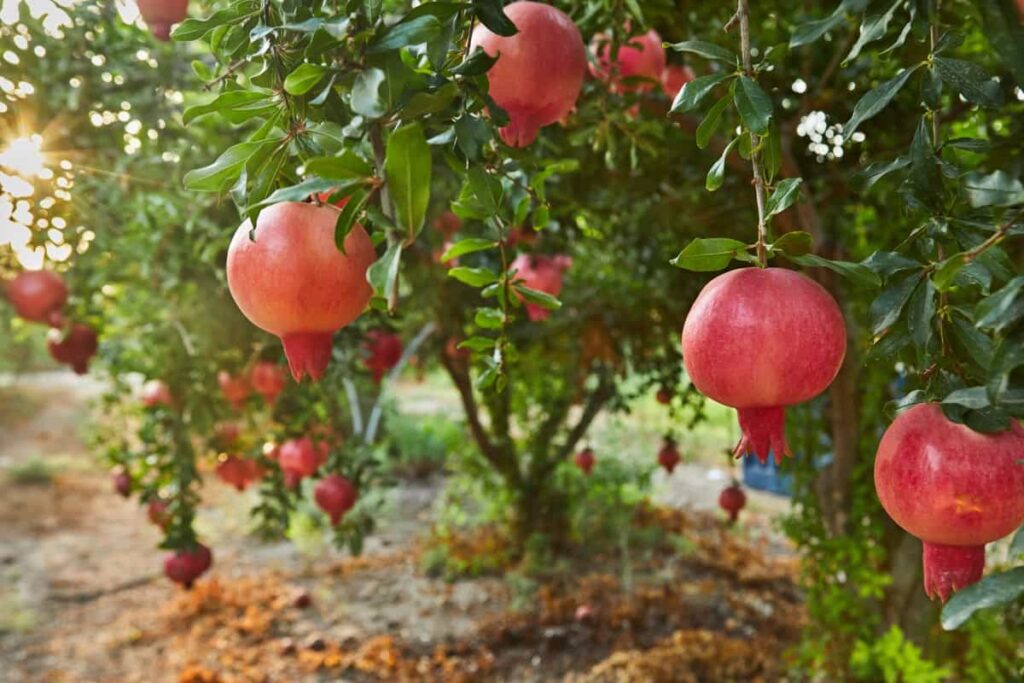
These methods should be applied immediately and repeated regularly until the disease is controlled. However, they may not be effective against severe infections or have limited shelf life, so they should be used with good cultural practices and proper hygiene.
Effective Home Remedies for Treating Fruit Rot in Pomegranates
Fruit rot is a common disease affecting pomegranates and causes them to decay and lose quality. It is caused by various fungi and bacteria that infect the fruit through wounds or cracks. Fruit rot can reduce the yield and market value of pomegranates and pose a health risk to consumers. Fortunately, some effective home remedies can help treat pomegranate fruit rot and prevent it from spreading. Here are some of them:
Using Beneficial Microorganisms to Combat Fruit Rot in Pomegranates
Beneficial microorganisms like Trichoderma, Bacillus, and Pseudomonas can be used to combat fruit rot in pomegranates. These microorganisms can compete with the pathogens responsible for fruit rot and prevent their growth. They produce enzymes and antibiotics that can break down the cell walls of fungi, and bacteria, effectively killing them. These microorganisms can be sprayed onto the fruits or applied to the soil surrounding the plants. They can also be mixed with organic matter like compost or manure and used as a mulch or fertilizer.
The Role of Proper Irrigation in Preventing Fruit Rot in Pomegranates
Proper irrigation is crucial in preventing fruit rot in pomegranates. Excessive and insufficient watering can create conditions that favor the growth of pathogens and lead to fruit infection. Excessive watering can cause waterlogging and reduce soil oxygen levels, weakening the roots and making them more vulnerable to infection.
On the other hand, insufficient watering can result in drought stress and reduce plant resistance to disease. It is important to establish a suitable irrigation schedule that matches the water needs of the plants and the soil type. Additionally, overhead irrigation should be avoided as it can splash water onto the fruits and spread fungal and bacterial spores.
Pruning Techniques to Minimize the Risk of Fruit Rot in Pomegranates
Pruning is an effective technique to minimize the risk of fruit rot in pomegranates. It improves air circulation and light penetration, reducing humidity and temperature that promote fruit rot. Pruning also removes diseased or damaged branches and fruits that can harbor pathogens. Regular pruning before flowering and after harvesting is recommended. Disinfecting pruning tools before and after each use is important to prevent pathogen transfer.
In case you missed it: Apple Picking Season in the United States: State-wise Harvest Guide for When to Pick Apples
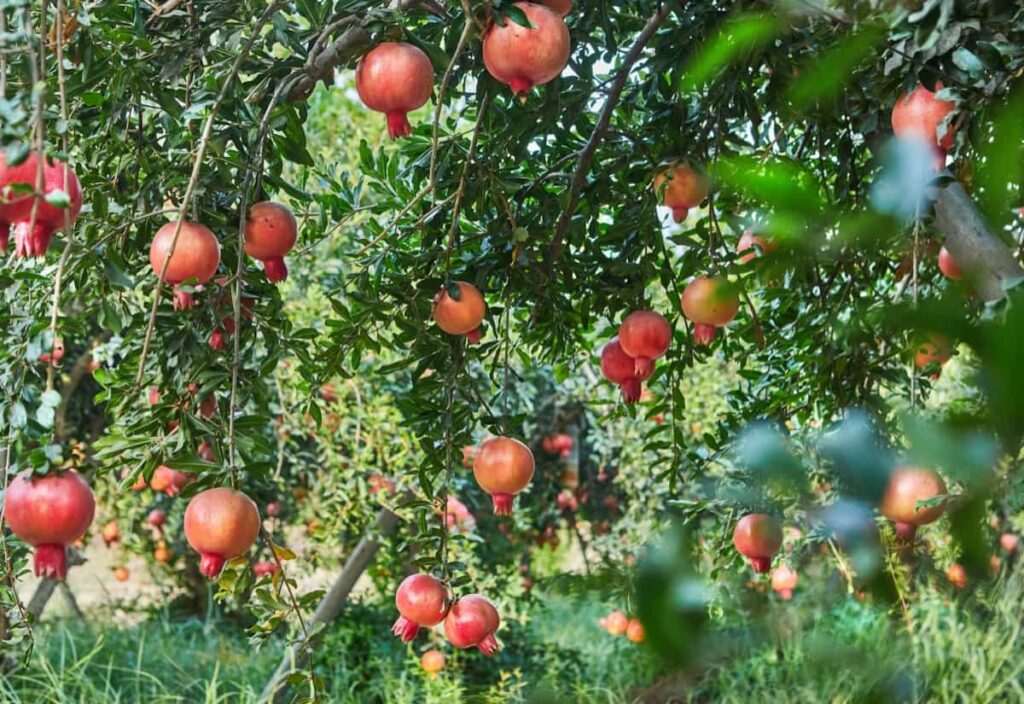
Importance of Soil Health in Preventing Fruit Rot in Pomegranates
Maintaining a healthy soil environment is important to prevent fruit rot in pomegranates. This achieved by ensuring a balanced pH, adequate nutrients, good drainage, and high organic matter content in the soil. These factors promote root development, nutrient uptake, and the growth of beneficial microorganisms that can suppress pathogens.
Home remedies to treat fruit rot include adding organic amendments like compost or manure and using cover crops like legumes or grasses to enrich the soil with nitrogen and organic matter. By implementing these methods, fruit decay can be prevented, and the pomegranates’ quality and yield can also be improved.
Organic Fungicides for Controlling Fruit Rot in Pomegranates
One of the options for managing fruit rot in pomegranates is to use organic fungicides derived from natural sources that have minimal impact on the environment and human health. Some examples of organic fungicides are neem oil, garlic extract, cinnamon oil, and bicarbonate. These fungicides can be applied as foliar sprays or soil drenches to reduce the fungal spores and inhibit their germination and growth. However, organic fungicides may need more efficacy and require frequent applications to be effective.
Enhancing Plant Immunity to Reduce the Incidence of Fruit Rot in Pomegranates
Another way to reduce the risk of fruit rot in pomegranates is to enhance the plant’s immunity and resistance to fungal infections. This can be achieved by providing optimal growing conditions, such as adequate irrigation, fertilization, pruning, and mulching. These practices can improve the plant’s vigor and health and reduce the stress and injury that may predispose the fruit to rot.
Additionally, some plant growth regulators, such as salicylic acid, jasmonic acid, and ethylene, can induce systemic acquired resistance (SAR) in plants, which is a mechanism that activates the plant’s defense genes and enzymes when exposed to pathogens.
Cultural Practices for Managing Fruit Rot in Pomegranates
Cultural practices are also important for preventing and controlling fruit rot in pomegranates. These include selecting resistant cultivars, avoiding overhead irrigation, removing infected fruits and plant debris, sanitizing tools and equipment, and rotating crops. These practices can reduce the inoculum and transmission of fungal pathogens and create unfavorable conditions for their development.
For example, selecting resistant cultivars can reduce the susceptibility of the fruit to rot, avoiding overhead irrigation can prevent water splashing and wetting of the fruit surface, removing infected fruits and plant debris can eliminate the source of infection, sanitizing tools and equipment can prevent cross-contamination. Rotating crops can break the disease cycle.
In case you missed it: 20 Steps to Grow Mandarin Oranges in Season from Seeds, Fruit, indoors, and Pots
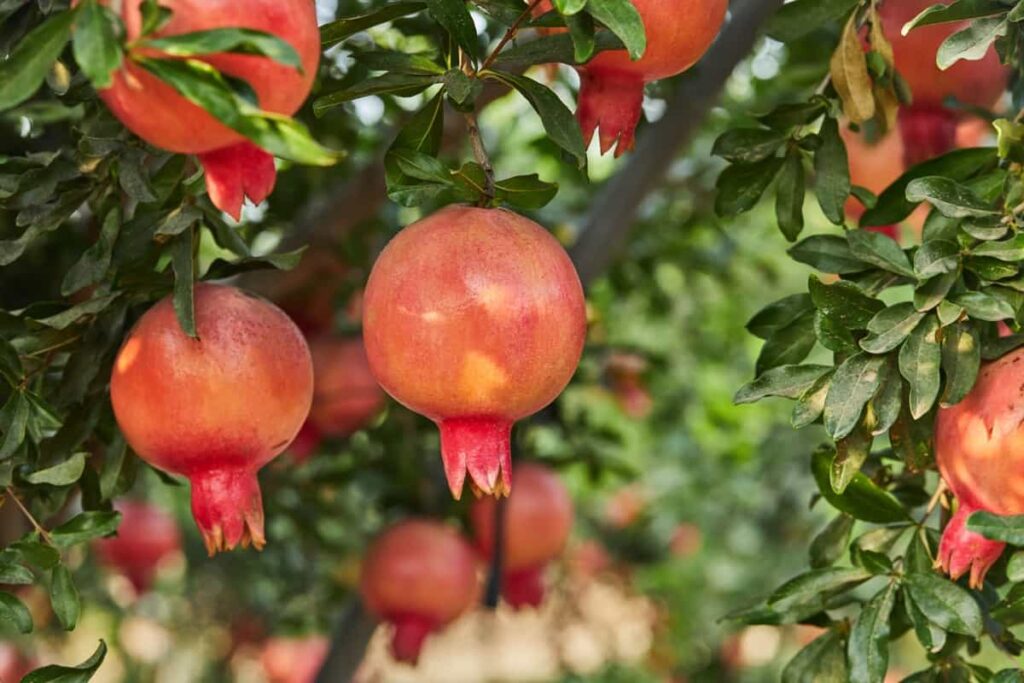
Integrated Pest Management Strategies for Fruit Rot Control in Pomegranates
Integrated pest management (IPM) is a holistic approach combining different pest and disease management methods to achieve effective and sustainable results. IPM strategies for fruit rot control in pomegranates involve:
- Monitoring the disease incidence and severity.
- Using biological control agents.
- Applying chemical fungicides judiciously.
- Implementing cultural practices.
Monitoring the disease can help determine the appropriate timing and frequency of interventions. Using biological control agents such as beneficial microbes or insects can suppress the fungal population and activity, applying chemical fungicides sparingly and according to label instructions can reduce the risk of resistance and residue problems, and implementing cultural practices can enhance the overall health and productivity of the plants.
Lifecycle of Pathogens Causing Fruit Rot in Pomegranates
The pathogens that cause fruit rot in pomegranates belong to different genera of fungi, such as Aspergillus, Penicillium, Alternaria, Botrytis, Fusarium, Rhizopus, Colletotrichum, Phomopsis, and Phytophthora. These fungi have different lifecycles and modes of infection, but they generally share some common features.
They produce spores that wind, water, insects, or other vectors disperse. They infect the fruit through natural openings or wounds on the skin or calyx. They colonize the fruit tissue and produce enzymes that degrade the cell wall and cause decay. They produce more spores released from the infected fruit and spread to other fruits or plants.
Environmental Factors Contributing to Fruit Rot Development in Pomegranates
Environmental factors such as temperature, humidity, rainfall, sunlight, wind, soil pH, and soil fertility influence the development of fruit rot in pomegranates. These factors affect the growth, survival of fungal pathogens, as well as the susceptibility and resistance of pomegranates. Generally speaking, high temperature (>30°C), high humidity (>80%), high rainfall (>100 mm/month), low sunlight (<8 hours/day), high wind (>10 km/h), low soil pH (<5.5), and low soil fertility (<50 ppm N) are favorable for fruit rot development in pomegranates.
Frequently Asked Questions (FAQ) on Fruit Rot in Pomegranates
How Can You Tell If a Pomegranate Has Gone Bad?
A pomegranate has gone bad when it has soft or mushy spots, cracks or splits in the rind, mold or discoloration on the surface, or a sour or fermented smell. A fresh pomegranate should be heavy, firm, and have a deep red or pink color.
What Causes Alternaria Fruit Rot Or Black Heart In Pomegranates?
Alternaria fruit rot, or black heart, is a fungal disease that infects pomegranates through wounds or cracks in the rind. The fungus grows inside the fruit and causes the seeds to turn black and rot. The disease can be prevented by avoiding mechanical damage to the fruit, applying fungicides, and removing infected fruits.
How Can You Store Pomegranates to Extend Their Shelf Life?
Pomegranates should be stored in the refrigerator. While entire pomegranates can be stored on the counter, they keep better in the refrigerator. Pomegranate seeds can stored in an airtight container after being removed from their protective skin.
In case you missed it: How to Apply and Secure Grants for Starting a Greenhouse Farming Business
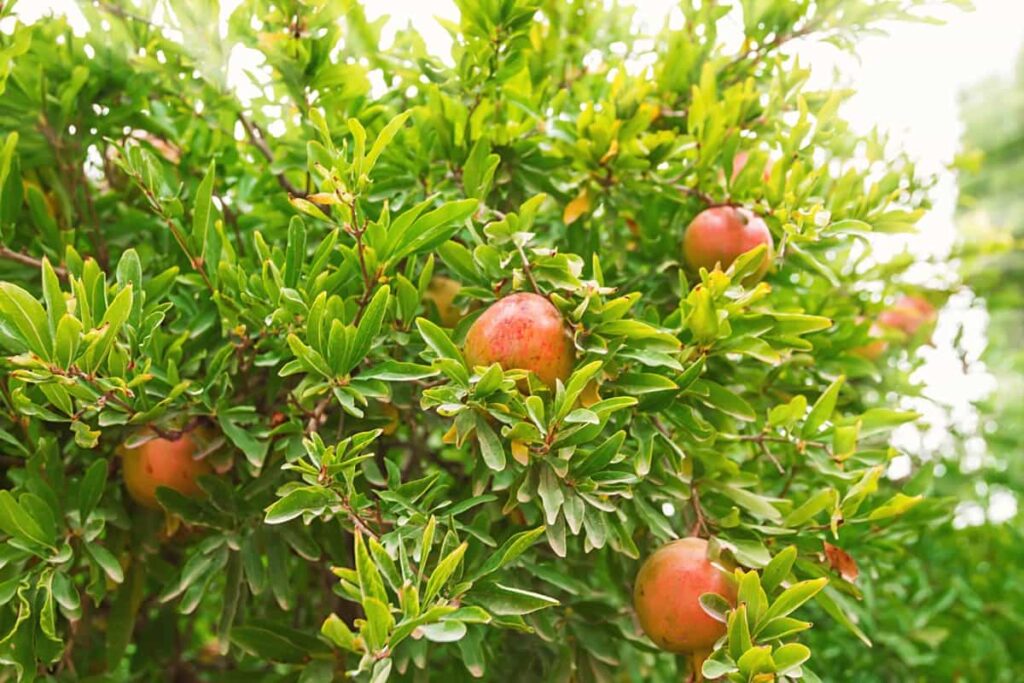
What Is the Best Way to Peel a Pomegranate?
There are different methods to peel a pomegranate, but one of the easiest and least messy ways is to cut off the crown and score the rind into quarters. Then, submerge the fruit in a water bowl and gently pull apart the quarters. The seeds will sink bottom, and the white membrane will float to the top. Discard the rind and membrane and drain the seeds.
Conclusion
Combating fruit rot in pomegranates demands a comprehensive approach. Growers can foster sustainable orchard health by recognizing the causes, understanding symptoms, and implementing natural remedies like orchard hygiene and neem oil application. Embracing these organic solutions aligns with a holistic, science-backed strategy for effective fruit rot management.
- Management Pests and Diseases in Your Cotton Field
- Sheep Farming Business Plan for Beginners
- Aquaponic Farming at Home: A Step-By-Step Guide
- Profitable Village Farming Business Ideas in 2024
- High-Yield Aquaculture: Fast-Growing Fish for Farming
- Effective Fish Pond Construction Techniques for Beginners
- Irrigation and Water Management in Pineapple Farming
- Blossom to Harvest: Mastering Flowering and Pollination in Papaya Farming
- Pig Fattening Essentials: From Selection to Sale for Beginners
- Raising Wagyu Cattle: A Complete Guide for Premium Beef Production
- Soil Types and Their Water Holding Capacity
- Optimizing Irrigation Schedules for Coconut Groves for Enhanced Yield
- Espresso Your Garden: Coffee Grounds for Healthier Acid-Loving Plants
- The Best Soil Mix for Snake Plants: How to Mix Your Own Snake Plant Soil
- Green Thumb Success: Expert Tips for Cultivating Greenhouse Beans All Year Round
- Bloom All Year Round: The Ultimate Guide to Indoor Hyacinth Care
- Eco-Friendly Gardening: How to Make Liquid Fertilizer from Kitchen Waste
- Ultimate Guide to Grow Anise in Pots: Explore Seed Propagation to Harvesting
- Guide to Raising Chester White Pigs: Discover Breed Facts to Growth Management
- Mastering the Elegance: The Ultimate Guide to Weeping Cherry Tree Care, Planting, and Maintenance
- Ultimate Guide to Planting Garlic in Grow Bags: Growing Strategies for Beginners
- How to Fix Spider Plant Leaf-Related Problems: Natural and Organic Remedies
- 10 Reasons Why Your Tulsi Plant is Shedding Leaves: Home Remedies and Solutions
- Optimizing Growth and Yield: The Advantages of Palm Bunch Ash Fertilizer
- Utilizing Neem Oil Extract as a Natural Pesticide for Hydrangea
- From Soil to Harvest: Various Ways in Which Farmers Can Use AI Tools
- Steps to Encourage and Induce Citrus Flowers: A Comprehensive Guide
- How to Fix Snake Plant Leaf-Related Issues: Natural and Organic Remedies
- Transform Your Garden into a Fragrant Oasis with Raat Ki Rani (Night Blooming Jasmine)
- Discover the Ideal Chicken Breeds for Philippine Farms
- How to Create a Poultry Egg Farm Business Plan for Profits
- Grow Lemon Cucumbers Like a Pro: Insider Techniques for Bountiful Yields
- Ultimate Guide to Caring for Your Pink Princess Philodendron: Tips for Thriving Variegation
- Areca Nut Profit Per Acre: Calculating Yield and Cost of Cultivation
- How Kaveri Chicken is Becoming a More Profitable Breed in Indian Backyards
- Transform Your Barn: 9 Steps to Convert a Horse Stall into a Chicken Coop
